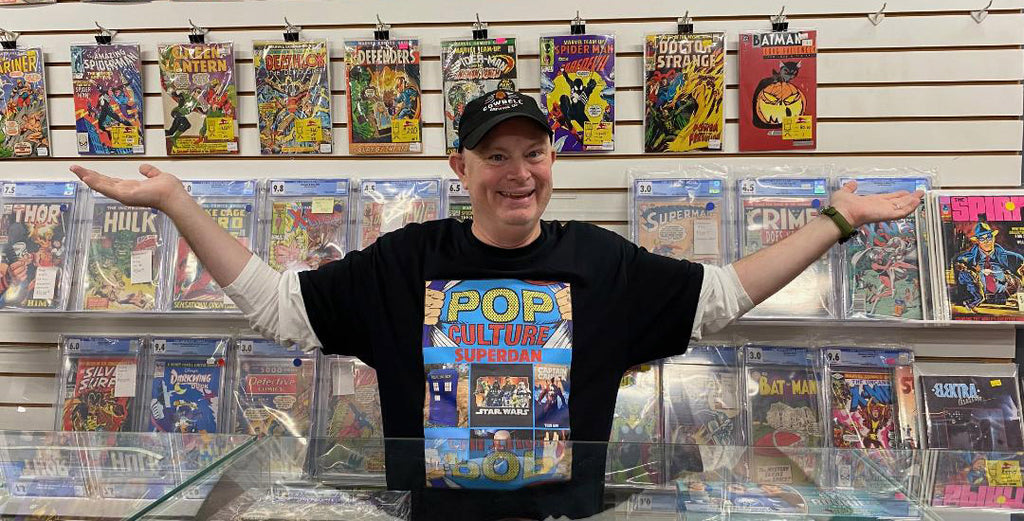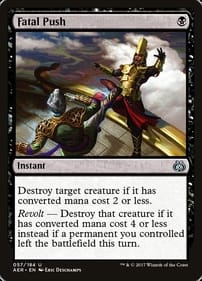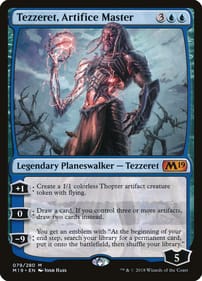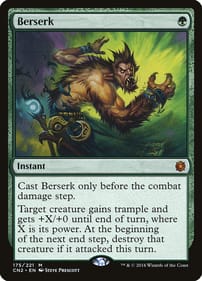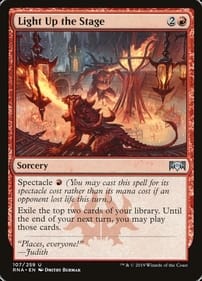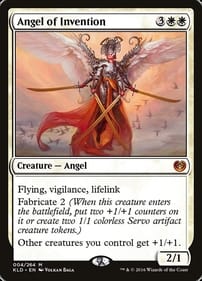Scott Chantler’s Squire & Knight Shows the Power Brains Have Over Brawn
By Dan BrownIf you have a young reader in your life, I have an idea for the perfect Christmas present.Scott Chantler’s Squire & Knight graphic novel came out this spring. It’s a tale of swords and sorcery, and it’s the kind of thing I wish had been around when I was a tween.You may know Chantler as the Stratford graphic novelist behind historical books like Two Generals and the Three Thieves fantasy series. The idea for his latest grew out of a Dungeons & Dragons campaign the artist/writer was running for his kids. It features a musclebound knight who is all bluster and self-promotion, a meek squire who is the real brains behind the operation, and a sleek dragon who sounds to my ear more like a surfer dude than Smaug.It’s one of those simple storylines – man in armour sets off to rid peaceful townsfolk of deadly flying menace – that turns out to be much more complicated by the end.More than anything, it will make youngsters think about bravery. Yes, hacking away at monsters with a broadsword is one way to display courage. But so is risking alienation by not buying into the same story everyone else in your community wants so desperately to believe.I also detected just a dash of Monty Python in Squire & Knight as well.If you know a boy or girl who is falling in love with comics and role-playing games, who’s into Harry Potter but is not quite ready for The Lord of the Rings, you would be doing them a favour by gifting them this 162-page volume as a token of your love this Yule. It will fire the young imagination.That’s because Chantler takes stock fantasy characters like knights, wizards and dragons, and puts a fresh twist on them, while also breathing new life into conventions such as the heroic quest.Even better, it’s all served up with a heaping helping of fun on the side. I couldn’t help but laugh at the headstrong Sir Kelton, who has a habit of getting ahead of himself. Before he’s even slain the dragon, he’s already dreaming about how he will go down in history: He can’t wait to hear the songs that will be sung in his honour to commemorate a deed he hasn’t even pulled off yet. The running joke here is that his page, who is more at home in the library than the livery, is so inconsequential to Kelton that the knight doesn’t even know the boy’s name. But it’s this same unassuming squire who uses the power of reason to suss out the situation on the ground before pulling Kelton’s fat out of the dragonfire.I won’t say much about the story’s antagonist, except that he’s not your typical scaly, fire-breathing beast. When Kelton assaults him with his sword, for instance, the laidback lizard responds, “Pretty rude, man.”For an old comic fan like me, I love the way Chantler plays with panels – including panels that seem empty of action. They teach patience to readers. Nor can I argue with old-school sound effects like “BAM,” “WHUMP,” and “CLANG.”And what should children get the adults in their life next month? Why, a Chantler tome like Two Generals, Bix or Northwest Passage would be just fine for the mature reader on your list.Dan Brown has covered pop culture for more than 30 years as a journalist and also moderates L.A. Mood’s monthly graphic-novel group.
A Love Triangle Crumbles in a Single Rainy Night
By Dan BrownA short column this week reviewing a short graphic novel.Ivana Filipovich’s What’s Fear Got to do With It? is from East Coast publishing house Conundrum Press, which has been coming on strong the last few years.If you like graphic novels that feel and land like subtitled foreign movies, you will want to check this slender volume out. It runs 58 pages, but doesn’t suffer for its brevity.The setting – Vancouver’s Richmond Night Market – isn’t foreign, but the “feel” of the book is. This might have something to do with Filipovich being part of the Balkan Renaissance in graphic novels. “My main inspiration is (Anton) Chekhov,” the comic creator says in notes accompanying the book’s release last month.She goes on to say that growing up in the former Yugoslavia she was fed a diet of “the best of BBC, great Russian movies, Quebec TV series and, of course, the best world literature and comics from both sides of the ocean.” She also counts Ingmar Bergman among her influences, as well as Salman Rushdie.What does it all add up to? A moody tale that unfolds in a single night showing how a love triangle falls apart. The characters are the criminal Max, who may or may not be a crime kingpin, and his girlfriends Eva and Mia. “It’s a (triangle) in which all characters are faulty, despite some of them being more likeable than others,” Filipovich explains.Another way to put it would be, if you’re a guy and you ever thought having a harem of beautiful ladies would be fun, this story will make you reconsider. The saddest part is that love in this milieu has been degraded to the point where to show devotion, all one has to do is buy the beloved material objects. “You always got whatever stuff you wanted,” an unbelieving Max tells Eva when the triangle crumbles. The tragedy here is Max can’t understand why the unconventional relationship has failed – he spent a lot of money on his foxes, didn’t he? Isn’t that all there is to it? And don’t get me started on how a single question rules one of the girlfriend’s lives: How will this look to my followers on social media? “I was born online. That’s me,” Mia boasts at the outset of the evening.All of this is presented in a moody wrapper. Filipovich evokes another film, Blade Runner, with her scratchy lines. The cityscape is drenched in ever-falling rain, which means the one moment when the sun comes out lands with force.If you are looking for a departure from the same old, same old, I recommend What’s Fear Got to do With It? Dan Brown has covered pop culture for 30 years as a journalist and also moderates L.A. Mood’s monthly graphic-novel group.
Watcher not satisfied with just watching: Omniscient alien serves as role model to journalist-in-the-making
By Dan Brown There is a Marvel character who inspired me to become a journalist – and it’s not Peter Parker. Nor is it Robbie Robertson or Ben Urich or anyone else who worked at the Daily Bugle, not even J. Jonah Jameson. It’s the Watcher. Where else would a boy growing up in small-town Ontario in the 1970s get the idea that being a professional observer could be a noble pursuit, except from a reticent, toweringly tall, omnipresent, bald alien? I certainly didn’t get it from my parents, neither of whom were journalists. I delivered the London Free Press to doorsteps and mailboxes in Poplar Hill every morning, so being familiar with the newspaper business from an early age likely played a part. But looking back, it’s apparent to me the Watcher was my journalistic role model long before I was even thinking of choosing a career path. I forget where I first encountered Uatu, as he is known among his people. It may have been in the pages of The Fantastic Four. I do recall how he caught my attention for real when Marvel’s What If? title debuted in 1977. The Watcher’s mission is to observe events and be present to witness crucial moments as the universe unfolds. He materializes on Earth when things of historic import are in the offing. It was Reed Richards, the leader of the Fantastic Four, who figured out if the Watcher had made himself known to mere humans, something heavy was about to go down. There is something pure to the Watcher’s stated purpose. “My sworn task is to observe and chronicle great events within this sector of the universe. My curse is to always witness and never participate,” he explained in one comic. “Is it not my sworn duty to stand passively by, observing the births and lives and deaths of men – and universes? Am I not fated forever to know the future in its infinite variations – yet bound by a sacred oath never to interfere?” the omniscient one asked in another. I can see how those kinds of idealistic sentiments would have made a big impression on my younger self. Decades later I ended up being a reporter, and that’s what a reporter is supposed to do: Bear witness. Oh, and about that oath never to meddle in the affairs of Earthlings . . . yeah, he didn’t keep his promise. The Watcher was constantly swearing not to interfere, and then, like clockwork, breaking his vow. Kind of like how the crew of the Enterprise was always violating the Prime Directive. Stationed on Earth’s moon, over the eons of rubbernecking the Watcher became enamoured of humankind. His tragedy is that he developed a soft spot for those whose history he was supposed to monitor without altering, which he could easily do, since he is pretty much omnipotent. I notice on some fan sites there are estimates of how many times the Watcher changed the course of events in the Marvel Universe that run into the hundreds. So can a journalist in our world succeed where the Watcher failed? No. For starters, there’s the scientific dictum that states even the act of observing something necessarily changes it. And if objectivity was possible, then we could simply program robots to do the job of journalism for us. But experience has taught me how human reporters can be, if not objective, then fair, which is what I strive to achieve in my own work as a watcher. Dan Brown has covered pop culture for 30 years as a journalist and also moderates L.A. Mood’s monthly graphic-novel group.
Laufman makes jump to grownup themes in Crimson Fall: Lambs of God
By Dan BrownWith Crimson Fall, London graphic novelist Derek Laufman has effortlessly made the shift from all-ages comics to more mature sequential art. That said, I’ve read the books Laufman has written/drawn for younger readers, and I never felt like I was being talked down to. And I’m old.Longtime Laufman fans need not fret about Crimson Fall. It has all the fun and adventure of Bot 9, RuinWorld and Witch of Wickerson; in the Forest City creator’s words, Crimson Fall is “Hellboy meets the Witcher with a splash of Game of Thrones in there.” In other words, the 24-page offering is a dungeon adventure with swear words and one very meaty adult theme that could be lost on younger readers: the complexity of faith.Byron’s Laufman debuted the black-and-white book in April at the Toronto Comics Art Festival, a gathering of creators whose specialty is producing indie comics, which is exactly Laufman’s jam, even though he has done work for DC and Marvel – the Coke and Pepsi of the comics industry – drawing characters like Batman, Spider-Man and Luke Skywalker.Subtitled Lambs of God, it’s part of a projected series set in the same milieu, and takes readers into a shadow-filled monastery that has been pillaged by forces unknown. Father McKellen is seeking answers about how his fellow holy men died, retaining the broadsword-wielding knight Sir Duncross to handle any, er, supernatural entanglements.You can enjoy the story as a straightforward, kickass adventure tale about a pair of demon slayers doing what they do best. But if you go beneath that surface battle, paying attention to the interplay between the two men, you’ll notice a difference in their beliefs.It is Father McKellen, the man of the cloth, who – when confronted with irrefutable evidence that creatures from hell exist – asks a rational question: “How is it possible that demons walk in our world?”Sir Duncross, in between hacks of his wide blade that echo with sound effects like “Slash,” “Slice” and “Stab,” outlines his belief in an older order: He puts his faith in gods, not God. He is not impressed with monotheism. “Does your church not still seek the truth?” the fighter quizzes the cleric, revealing the disgust he feels for religious leaders who won’t be straight with their followers about the nature of evil.The foray into the monastery comes to a fiery conclusion, and in the end, each of the men makes a small symbolic move in the direction of the other.As I have with Laufman’s previous creations, I give Crimson Fall: Lambs of God an enthusiastic thumbs up. This is a fun adventure, stylishly rendered, that left me with much food for thought.Dan Brown has covered pop culture for 30 years as a journalist and also moderates L.A. Mood’s monthly graphic-novel group.
Call me impressed by Call Me Bill
By Dan BrownCall Me Bill is an intriguing graphic novel that provides one possible answer to a question posed long ago: Why would a young woman who drowned in a maritime disaster off Canada’s East Coast in 1873 be dressed up as a male sailor when her remains were recovered?It’s former Londoner and current Nova Scotia resident Lynette Richards who supplies that answer, sketching a history – bolstered by newspaper accounts from back in the day – of the S.S. Atlantic crew member who went by the name of Bill.This book transported me back to the 1870s, with its sparse lines, washed-out grey tones and accurate, period-specific dialogue.“I didn’t know Bill was a woman,” a fellow sailor tells newspaper reporters after the ship hits rocks and sinks close to shore. “He used to take his grog like all the rest and was always begging and stealing licorice. He was a good fellow and I’m shocked that he was a woman.”As a starting point, Richards – whose usual medium is stained glass – imagines a New Jersey farm girl named Maggie Armstrong whose time “playing the tomboy” is put to an end by a stern stepmother who demands she must finally “dress and behave like a lady.”Having left home, and after a series of high-seas adventures, Bill has the bad fortune to be on the deck of the Atlantic the night it sinks. The sinking was huge news at the time, but got overshadowed in the history books by the Titanic, which went down a few decades later. (Oh, and for the record, Call Me Bill would make an AMAZING movie.)How evocative is Call Me Bill? In one panel, which sets forth part of a trip Bill took to England prior to joining the crew of the Atlantic, two starving rats have the most pained looks on their faces, as vivid a portrayal of animal suffering as I’ve ever come across. Richards has an impressive ability to evoke sympathy for her characters.That kind of symbolism runs through the whole book, as when another sailor explains to Bill how seals called selkies are believed by mariners to be able to come ashore, assuming the form of humans females on dry land. “The seals gaze at me as if they know my deepest secrets,” Bill thinks, seeing their sad eyes.And early in the story, there is a moment of reflection on a trestle bridge after Bill runs away from home: “Behind me was my past, ahead my future. The river babbled like many voices.” Bill plunges ahead into an uncertain future, not knowing that doom awaits on the other side.Although it is published by Emanata, the young-adult imprint of East Coast publisher Conundrum Press, Richards never talks down to her readers in Call Me Bill.And as a stirring chapter in our country’s history of maritime disasters, I put Call Me Bill right up there with the Gordon Lightfoot song Wreck of the Edmund Fitzgerald. It moved me that much.Dan Brown has covered pop culture for 30 years as a journalist and also moderates L.A. Mood’s monthly graphic-novel group.



